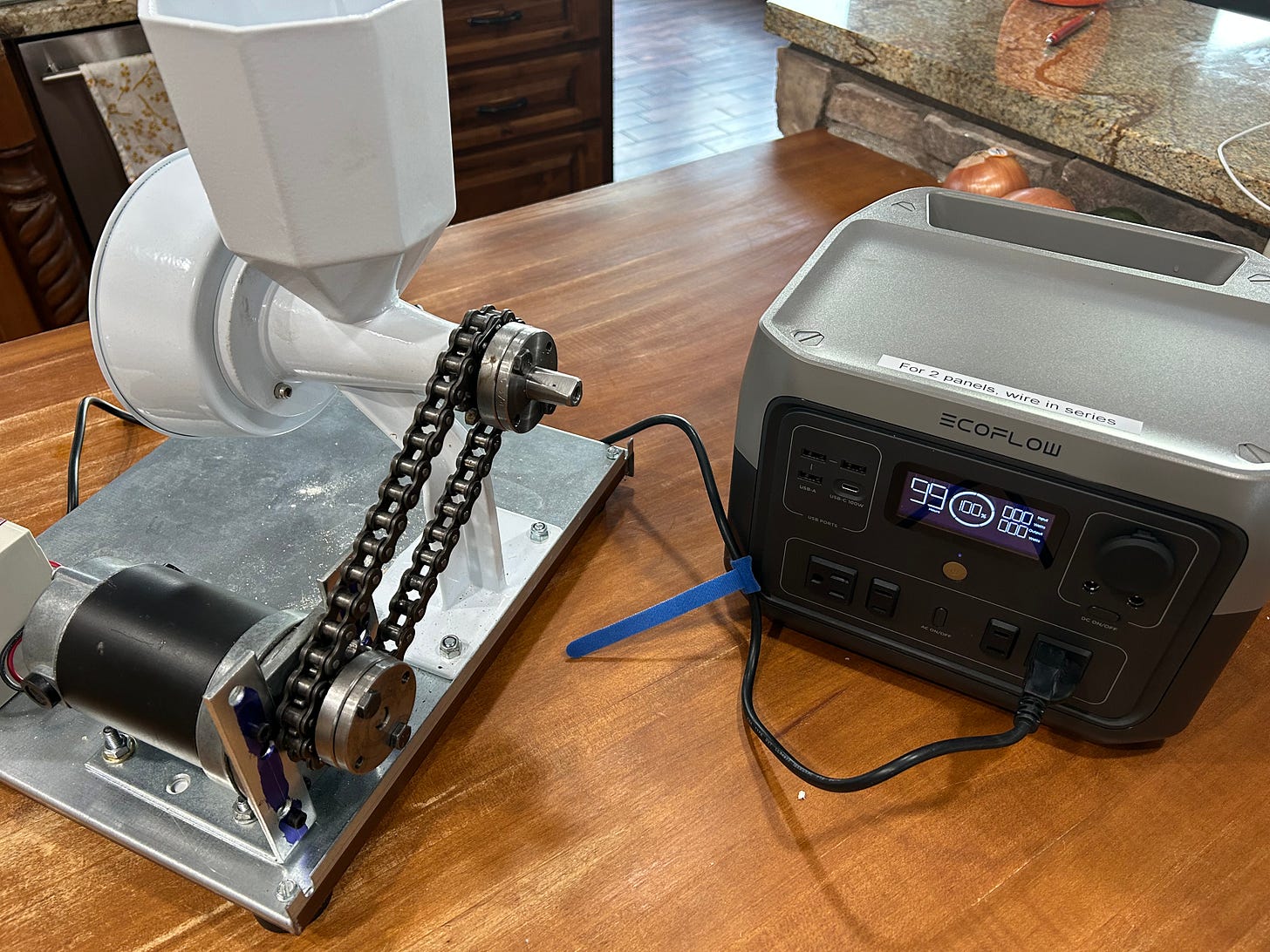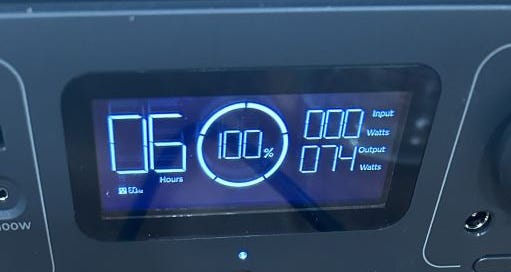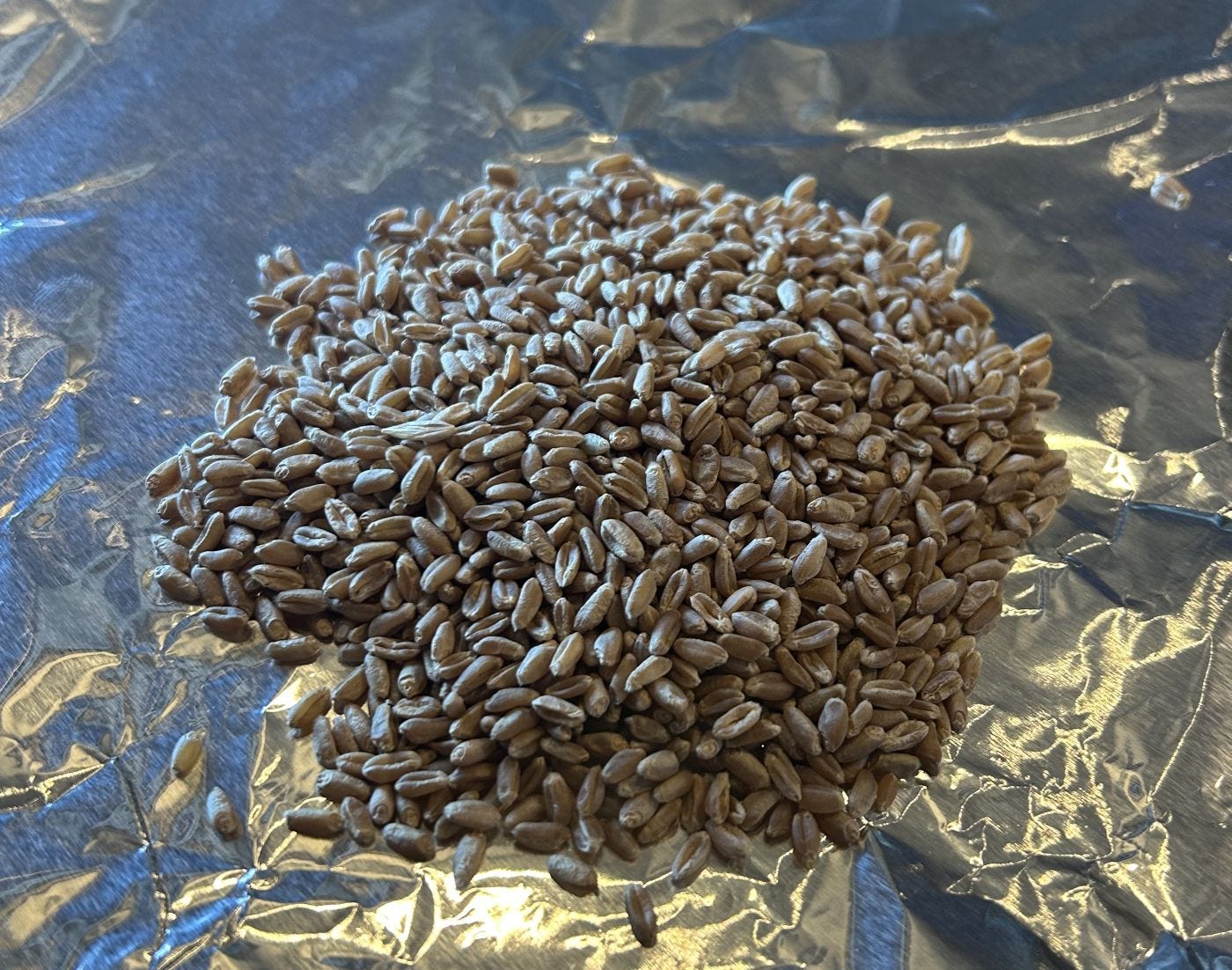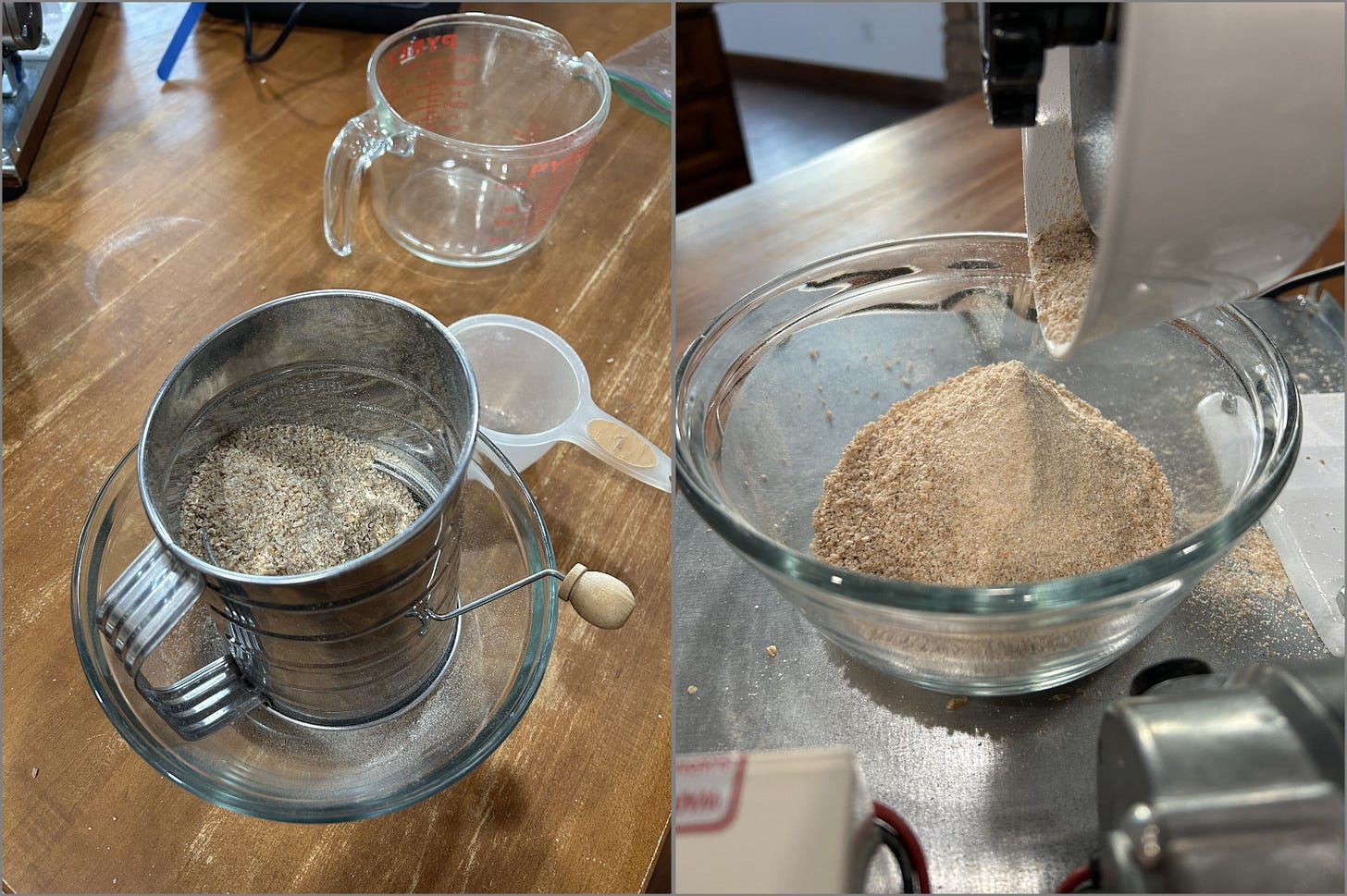Introduction
Around six months ago one of my self-reliance tribe buddies loaned me his hand cranked wheat grinder. And he also gave me some surplus motors so I thought “Hey, I can use electricity to bake bread!” I worked on the motorization of this on and off but finally got tired of it taking up space in my shop so I applied myself in earnest to finish the project.
Here we go.

Part of the experiment was to instrument the process so it is plugged into the 120VAC inverter of the EcoFlow. This told me the delivered power and by percentage of battery usage, how “expensive” the process was in energy.
The feed was red wheat berries I had stocked up from Winco almost a year ago. Wheat in its uncracked form lasts longer than when it is ground to flour and most of what I had bought in 40 lb. bags was stored in CO2 to displace the oxygen. But I kept some aside for this test.
Grinding
The grinder is a Wondermill Junior which I bolted down to a plate of wood covered by galvanized steel. I see they sell integrated electric units now but this is what I was handed. If you can operate the basics then everything else falls into place.
The spacing between the grinding stones is adjustable so for the first pass I chose one that did some real work without stalling the motor. It was pulling around 100 watts on average.
The recipe (below) called for 3 cups of flour. Each pass through the grinding stones took about 6 minutes, with the output sifted after the 2nd pass to eliminate useless regrind. To get to fully sifted flour I needed 6 passes which consumed 10% of the EcoFlow module’s battery.
Finally I had flour! Which I baked according to this recipe from Mom On Timeout.
The only cookie cutter we had was an oval so they came out like footballs. The final texture was a bit grainy but as my same buddy commented “Not bad, the consistency of cornbread. Would be great with butter or honey.” I thought they would be great as a hearty addition to beef stew on a cold night but as suggested I ate mine with butter.
Learnings
You will likely have to perform milling in steps; wheat berries straight to flour at once is unreasonable unless you have an ox or Sampson himself to turn the stones
100 watts of continuous power draw is entirely reasonable and can be immediately compensated for with a single solar panel on a sunny day
Regarding the above, the idea of a neighborhood-centric milling effort is also quite reasonable to support many families
Fine flour like we are used to is out the window if things get tough so learn to bake with coarser stuff
The EcoFlow-type units are a must have since they enable the existing wide range of 120VAC products we already have (or can easily fashion)
The heat of baking is a challenge (addressed below)
Baking
This was the one area I could not – easily – run on solar recharged power. I have nothing in the 12VDC portable line that will take me to 425° as baking requires and the smallest toaster oven I could find pulled 1000W which though I could run on the big house inverters, was beyond the ability of my countertop EcoFlow.
Converting electricity to heat is such a profound waste I just despise it. However, baking does require a lot of heat in an insulated environment. When I come up with a good solution I will post it here.
Until then this gives you an idea of off-grid breadmaking.





